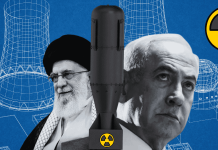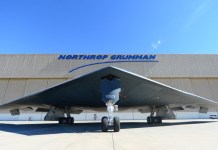China’s first domestically built aircraft carrier sailed into Hong Kong on Thursday, just days after the city marked 28 years under Chinese rule.
The Shandong, measuring more than 300 metres (1,000 feet) and commissioned in 2019, is China’s second carrier and is central to its regional ambitions under President Xi Jinping, who has overseen a massive naval buildup that has rattled Asian neighbours.
Beijing has announced that the Shandong and its escort vessels, which include the destroyers Zhanjiang and Yanan, as well as the frigate Yuncheng, will visit the Chinese finance hub for five days and host “tours and cultural exchange activities.”
The Shandong’s visit came days after it concluded combat drills in the western Pacific alongside China’s first aircraft carrier, the Liaoning.
It anchored at the western edge of Hong Kong’s Victoria Harbour while the escorts berthed at the People’s Liberation Army naval base on Stonecutters Island on the northern side of the famous waterway.
City leader John Lee said at a welcoming ceremony that the visit would let the public “experience the magnificence and sophistication of the country’s modern warships”.
The PLA navy “not only protects national sovereignty, security and territorial integrity, but is also an important force for regional peace and stability,” Lee said.
The Shandong and the Liaoning are both of a modified Soviet design, with J-15 fighter jets and helicopters seen on the Shandong’s distinctive “ski jump” deck on Thursday.
China’s third and more advanced carrier, the Fujian, is undergoing sea trials.
Tickets to visit the vessels in Hong Kong were snapped up within minutes on the social media app WeChat.
Great Power
Crowds flocked to the waterfront and nearby hillsides on Thursday morning to catch a glimpse of the vessels.
City officials set up a restricted flying zone over parts of the harbour and temporarily reduced ferry services.
The Shandong is the second Chinese aircraft carrier to visit Hong Kong, following a 2017 visit by the Liaoning.
“The idea appears to be to impress upon the Hong Kong public… the ruling (Chinese Communist Party’s) quest for building what’s termed as the status of a maritime great power,” said Collin Koh, a naval affairs specialist at the S. Rajaratnam School of International Studies in Singapore.
China has rapidly upgraded its naval forces as it seeks to expand its reach in the Pacific and challenge a US-led alliance.
The US Department of Defense stated in a December report that China has the largest navy in the world, with a battle force comprising more than 370 ships and submarines.
Japanese authorities stated that China’s dual-carrier exercise in the Pacific last month was the first of its kind, reflecting Beijing’s intention to enhance operational capabilities in distant areas.
Chong Ja Ian of the National University of Singapore said China’s latest exercises suggest “both aircraft carriers are ready to engage in more sophisticated operations.” Still, some unknowns remain, including the operational tempo they can bear.
The Shandong was reportedly present in Philippine waters in April during a joint US-Philippines military exercise, deepening tensions between Manila and Beijing over disputed territorial claims in the South China Sea.
In that same month, the vessel also took part in drills testing the Chinese navy’s ability to “blockade” Taiwan, according to the Eastern Theater Command.
China insists that the self-ruled democracy is part of its territory and has refused to rule out seizing the island by force.

Chinese Aircraft Carriers Flex Muscles
On June 30, two Chinese aircraft carrier groups conducted combat drills in the western Pacific Ocean, Beijing said as it honed its military capacity, unsettling some regional neighbours.
The People’s Liberation Army (PLA) said its Liaoning and Shandong carrier formations “recently… completed combat training on the high seas and returned to their home ports safely”.
The mission was “routine training organised in accordance with annual plans”, the military said on an official social media account without disclosing the dates or precise locations of the manoeuvres.
The carriers conducted joint combat and systems training as well as reconnaissance, early warning, anti-strike, sea assault, air defence, and night flight training, the PLA said.
State broadcaster CCTV published a video of sleek grey warplanes soaring into the air from the runway on the deck of one of the carriers.
Other clips showed two planes flying in close formation, as well as a helicopter, with navy personnel watching through binoculars.
Recent Chinese manoeuvres in the Pacific have caused particular concern in Japan, which reported this month that it had detected two aircraft carriers operating simultaneously in the Pacific for the first time, indicating China’s intention to enhance its operational capacity in remote areas.
Tokyo also said Chinese fighters took off from the Shandong and flew within 45 metres (150 feet) of a Japanese military patrol plane.
Chinese officials disputed the account at the time, blaming the incident on the Japanese aircraft.
The PLA acknowledged on Monday that “during the drills, foreign warships and aircraft approached (the carriers) several times to conduct reconnaissance, tracking and surveillance”.
“The formations maintained a high alert level and a responsive combat status throughout the process, organised combat takeoffs of carrier-based aircraft many times, and handled affairs professionally and steadily,” it said.
China has invested billions of dollars in modernizing its military in recent years, a trend that has unnerved some governments in East Asia, despite Beijing’s claims that its aims are peaceful.
Liaoning and Shandong are China’s only two carriers currently in operation, but a third, the Fujian, is undergoing sea trials.
A Taiwanese security official also said this month that Beijing had deployed its two aircraft carrier groups around the island in May.
The Communist Party has refused to rule out using force to seize control of Taiwan, a democratic, self-ruled island that Beijing insists is part of its territory.
Via: Agence France-Presse




